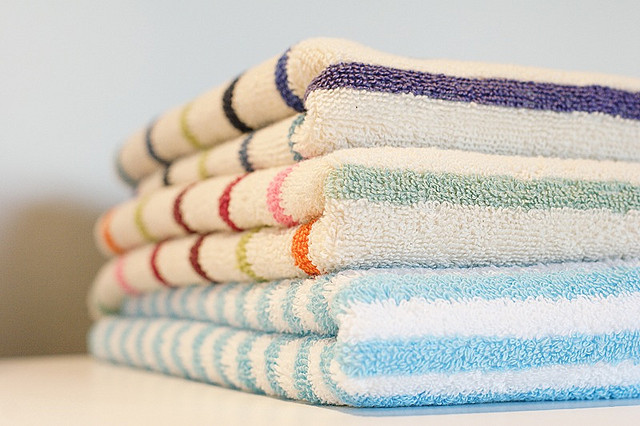Towels, both in bathrooms and kitchens, are among household items with the highest load of germs; therefore, they can be the cause of some infections that affect all family members, according to a recent study.

Researchers name two causes for this situation:
- First, towels retain moisture, which allows the bacteria to survive and multiply in them.
- Second, towels are used in rooms that harbor the most germs: the bathroom and the kitchen.
A study done at the University of Arizona has discovered coliform bacteria (these are normally present in faeces and can cause food poisoning and diarrhea) in 89% of kitchen towels, out of which E. coli bacteria was harbored in 25.6% of towels.
Kitchen towels can often accommodate infectious germs because they are used for wiping hands and surfaces that may come into contact with contaminated food.
Viruses or bacteria can be spread onto several family members via bath towels, if the same towels are used.
Citing the results of previous research, the authors also warned that, if kitchen towels are cleaned superficially between uses (e.g. washed in the sink with a little detergent, rinsed and dried), the germs of the coliforms E. coli and Salmonella can still survive and become active when the towels are used next time.
A more efficient method for reducing the amount of bacteria in the towels is soaking them for 2 minutes in water with chlorine bleach added.
Dr. Lisa Ackerley, an expert hygienist at the University of Salford, UK, recommends the following to prevent health problems caused by towels that carry bacteria:
- Dirty towels should be stored separately from other laundry.
- Air dry towels after use, so they don’t stay wet while waiting to be washed.
- Wash towels often, at least once a week.
- Wash them at 90 degrees Celsius.
- If you choose to wash towels at lower temperatures, use a detergent with disinfectant to kill bacteria.
- Chlorine bleach kills bacteria and can be used for washing white clothes.
- If small towels are used for washing your face, change them every day and wash them at the weekend.
- Each family member should have his or her own bathroom towel, especially if a family member is sick.
Prof. Anthony Hilton, head of the Department of Biological and Biomedical Sciences at Aston University, UK, warns that washing towels at low temperatures won’t always kill the bacteria.
There is a tendency nowadays to wash clothes at lower temperatures (even at 30 degrees Celsius) to save energy and minimize the environmental impact of this activity; however, in special situations, we must take a different approach. If a child is sick and vomits, for example, on a piece of fabric, this should be washed at higher temperatures. Many pathogenic bacteria grow well at 37 degrees, which is the normal temperature of the human body, so washing textiles at 30 degrees won’t destroy them. A detergent with a disinfectant added can be used to kill bacteria.
